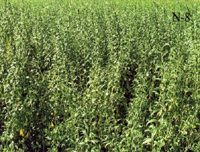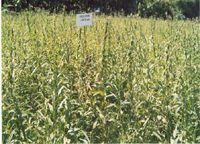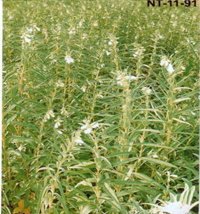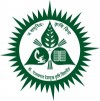|
|
 |
||
|
|
Faculty Information |
||
|
|
|||
|
|
|||
|
|
About Project
The AICRP on linseed and sesame was established at main campus of Dr. Panjabrao Deshmukh Krishi Vidyapeeth, Akola in April 1985. Subsequently this project was shifted to College of Agriculture, Nagpur from 1987 and AICRP on Rapeseed Mustard in June 2009. The work on the improvement of linseed in the Vidarbha region was started in the section of Economic Botanist, Nagpur in 1924-25 and one high yielding strain, EB-3 with higher oil content was developed. From 1934 to 1944, the work on this crop was done under the Oilseeds Research Scheme, Central Provinces, Nagpur and two improved strains, No-3 and No-55 possessing higher yield and higher oil content were developed. These strains though well suited to Vidarbha conditions were not resistant to rust. Attempts were, therefore made to develop rust resistant, high- yielding strains such as IP-135 and IP-328. As a result of hybridization and subsequent selection, one improved strain, C-429 was developed and released for cultivation in 1958. It combines high yield and high oil content No.-3 with rust resistance of IP-135. After the establishment of All India Coordinated Research Project on Linseed and Sesame in 1987 at Collage of Agriculture, Nagpur.
Sesame is the oldest indigenous oil plant with longest history of its cultivation in India. India is still the world leader with the maximum (25.8%) production from the largest (29.8%) area and highest (40%) export of Sesame in the world. Sesame is quality food, nutrition, edible oil, bio-medicine and health care, all in one. The international demand and market of Sesame has witnessed significant growth in the recent past. It has up-surged as a silver line in the agri-export of the country with its highest contribution of foreign exchange from the export of sesame seed. Sesame has remarkable antioxidant function due to the presence of lignans and tocopherol. The seed, highly rich in quality proteins and essential amino acids, especially methionine is considered rejuvenative and anti-aging for human body. Sesame seed is rich source of linoleic acid, vitamins E, A, B1, B2 & niacin and minerals including calcium and phosphorus. The seeds are used in the preparation of baby foods considered as the best substitute for mother’s milk to compensate the breast feeding. The oil with 85% unsaturated fatty acids, is highly stable and has reducing effect on cholesterol and prevents coronary heart diseases. Sesame is called as the Queen of oils. Sesame is grown in all seasons of the year and being a short duration crop, fits well into various cropping systems.
In Vidarbha, the Sesame crop is grown in Kharif, Semi-Rabi & Summer situation. Since the Sesame crop has less problem of pest & diseases in summer condition, it can be very well harvested. Now a days there are tremendous possibilities to extend the area under Summer sesame cultivation. Sesame had more preference from farmers because of low input required & high price of produce. The irrigation command area may be covered for summer cultivation of Sesame crop after harvest of paddy & early crop of Rabi. Area under summer Sesame is increasing in eastern part of Vidarbha especially in Bhandara & Gadchiroli districts.
The Sesame Research Unit was included in the AICRP w.e.f 1st April, 1987, with staffing pattern as one Jr. Breeder (Sesame) & one Agriculture Assistant at Nagpur. One Jr. Agronomist post sanctioned in this Unit in XIth plan. The Agronomy & pathology discipline’s work is being looked after by the Scientists born on the establishment of Linseed Research Unit.
Mandate
Sesame Breeding
- Breeding for high yielding varieties with high oil content.
- Breeding resistance for powdery mildew, gall midge fly & leaf roller / capsule borer.
- Maintenance & Evaluation of Germplasm.
- Development of extra white seed coat varieties.
- Breeding for earliness.
Sesame Agronomy
- To find out the response of Sesame to different sources and levels of Sulphur in term of seed and oil yield.
- To optimize the yield through natural inputs.
- To evaluate the efficacy of bio/natural inputs on yield and oil content of Sesame.
- To study the effect of micronutrients in-combination with organic manure on the yield of Sesame.
- To test the maximum possible yielding capacity of Sesame
Sesame Pathology
- To know the prevailance of Sesame diseases in the region.
- To evaluate Sesame genotypes / lines against major diseases.
- To manage Sesame soil borne diseases through bio-control agents.
- To test the efficacy of fungicide against fungal foliar diseases.
- To manage Sesame diseases through integrated disease management.
Research Activities and Achievements
The following varieties were released for commercial cultivation.
- N-8
- AKT-64 (Kharif) (1995-96)
- AKT-101 (Summer) (2001)
- PKV-NT-11 (Summer) (2009)
|
Variety : AKT-64
|
||
| Year of Identification | 1995-96 |  |
| Parent | N-128 x C-50 | |
| Breeding Method | Pedigree | |
| Recommended ecology | Suitable for kharif cultivation for Vidarbha region | |
| Plant Height | 30-135 cm | |
| Varietal Character | 3-4 branches, dull white seed colour, violet flower | |
| Duration | 85-90 days | |
| Maturity Group | Early maturity | |
| Reaction of Major Pest/Diseases | Resistance to alternaria blight, powder mildew, bacterial leaf spot, wilt and moderately resistant to phyllody, macrophomina stem/root rot diseases | |
| Seed Colour | Dull white | |
| Spacing | 30 x 10 cm | |
| Plant Population | 2.5-3 lakh per hectare | |
| Fertilizer Dose | 40:25:00 NPK kg/ha | |
| Seed Rate | 2.5 kg/ha | |
| 1000 Seed Wt. | 3-4 gm | |
| Oil Percentage | 47-48% | |
| Average Yield | 550-650 kg/ha | |
|
Variety : AKT-101
|
||
| Year of Identification | 2001 |  |
| Parent | N-62-10 x R-19 | |
| Breeding Method | Pedigree | |
| Recommended ecology | Summer cultivation were irrigation facilities are available | |
| Plant Height | 89 cm | |
| Varietal Character | 4-5 branches, white seed colour and violet flower | |
| Duration | 90-95 days | |
| Maturity Group | Early maturity | |
| Reaction of Major Pest/Diseases | Moderately resistance to phyllody, macrophomina root rot and bacterial blight | |
| Seed Colour | White seed colour, violet flower | |
| Spacing | 30 x 5 cm | |
| Plant Population | 2.5-3 lakh per hectare | |
| Fertilizer Dose | 25:25:00 NPK kg/ha | |
| Seed Rate | 3-3.5 kg/ha | |
| 1000 Seed Wt. | 3.8 g | |
| Oil Percentage | 48-49% | |
| Average Yield | 750-850 kg/ha | |
|
Variety : N-8
|
||
| Year of Identification | — |  |
| Parent | — | |
| Breeding Method | Selection | |
| Recommended ecology | Suitable for Semi-rabi cultivation for Vidarbha zone | |
| Plant Height | 110-130 cm | |
| Varietal Character | 6-7 branches with light brown colour seed, violet flower | |
| Duration | 120 days | |
| Maturity Group | Late | |
| Reaction of Major Pest/Diseases | Resistant to macrophomina root rot/stem rot, wilt, bacterial blight, bacterial leaf spot, powdery mildew and phyllody | |
| Seed Colour | Light brown colour | |
| Spacing | 30 x 10 cm | |
| Plant Population | 2.5-3 lakh per hectare | |
| Fertilizer Dose | 25:25:00 NPK kg/ha | |
| Seed Rate | 2.5-3 kg/ha | |
| 1000 Seed Wt. | 3-3.5 gm | |
| Oil Percentage | 50-51% | |
| Average Yield | 400-700 kg/ha | |
|
Variety : PKV-NT-11
|
||
| Year of Identification | 2009 |  |
| Parent | JLT-9 x NT-4 | |
| Breeding Method | Pedigree | |
| Recommended ecology | Suitable for summer season : First week of February |
|
| Plant Height | Average 96 cm (74-125 cm) | |
| Varietal Character | 4-5 branches with white colour seed, violet flower | |
| Duration | Average 99 days (86-109 days) | |
| Maturity Group | Midlate | |
| Reaction of Major Pest/Diseases | Resistant to phyllody and moderately resistant to root rot and bacterial blight, leaf roller & capsule borer | |
| Seed Colour | White colour | |
| Spacing | 30 x 5 cm | |
| Plant Population | 2.5-3 lakh per hectare | |
| Fertilizer Dose | 25:25:00 NPK kg/ha + 15 S kg/ha | |
| Seed Rate | 3-4 kg/ha | |
| 1000 Seed Wt. | 3.6 gm | |
| Oil Percentage | 51.99% | |
| Average Yield | Average 800 kg/ha (600-1000 kg/ha) | |
Contact Information
Principal scientist and Linseed Breeder
All India Coordinated Research Project on Oilseeds (Sesame)
College of Agriculture
Nagpur – 440001 (Maharashtra)
